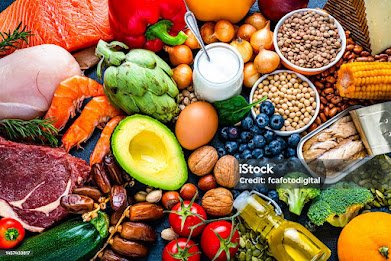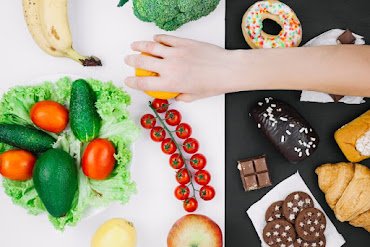A Complete Guide to Creating a Well-Balanced Meal for People with Type 2 Diabetes
MAY 14,2024
BY NR.BALOCH
After receiving a type 2 diabetes diagnosis, you must change your dietary patterns to better manage the condition. A nutritious, well-balanced diet can help you live a longer, better life, and keep your blood sugar levels stable. It can also reduce your risk of developing health problems. This in-depth guide explains how to put up healthy meals that take diabetes into account, with an emphasis on cutting back on sugar and bad fats.
How Do You Build a Plate That Considers Health?
2. The Focus Is on Vegetables
Make an effort to include two or three portions of non-starchy vegetables in your meal. Half a cup of cooked vegetables or an entire cup of salad is represented by a single serving. Grated vegetables can add flavor to soups, sauces, and oven-baked dishes; alternatively, they might take center stage instead of playing supporting roles.
For every individual:One cup* of cooked non-starchy vegetables, including carrots, broccoli, cauliflower, etc.
Two cups* of mixed salad mixed with bell peppers, tomatoes, lettuce, spinach, etc.
*You are welcome to serve more than these suggested serving sizes.
3. Include Lean ProteinEating protein is crucial because it keeps you feeling fuller for longer. Lean meats and dairy should be your goals, and before cooking, make sure to cut off any visible fat.
For every individual:
- Two little (45g) chicken eggs
- ½ cup of cooked legumes, such as chickpeas or lentils, or a blend of three beans
- 100g of skinless cooked chicken (125g raw)
- 100g of lean meats (125g raw) such as lamb, hog, or beef
- 120g of cooked fish (170g raw), such as canned tuna, salmon, or mackerel
- 40g of low-fat cheese, or roughly two pieces
4. Add Controlled Portions of High-Quality Carbohydrates
Eat less starchy vegetables in your meal to lower its glycaemic load.
To keep the overall GI of your meal low, choose foods high in fiber yet low to moderate in GI. Choose quinoa, barley, pasta, noodles, grainy breads, and basmati rice. Interestingly, legumes have low GI carbohydrates and are also a source of protein.
For every individual:
- A quarter cup of cooked brown or basmati rice
- One cup of cooked noodles or pasta, ideally wholemeal
- Two slices of wholegrain bread or one tiny wholegrain bread roll
- One cooked medium-sized kumara or tiny potato
- One medium-sized corn cob
- ½ cup of cooked couscous or quinoa
5. Add a Tiny Amount of Nutritious Fats
Good fats are essential for controlling cholesterol levels and for lowering the GI of your meals. Add modest amounts of heart-healthy fats from avocado, almonds, and seeds, as well as olive oil.It’s important to remember that a range of protein sources, including meat and tofu, can supply enough fat; therefore, adding extra may not always be required.
For every individual:
- two tsp pesto or chopped or crushed nuts
- One teaspoon of extra virgin olive oil or another plant-based oil
- two tspn of salad dressing or avocado
- A single tablespoon of hummu

